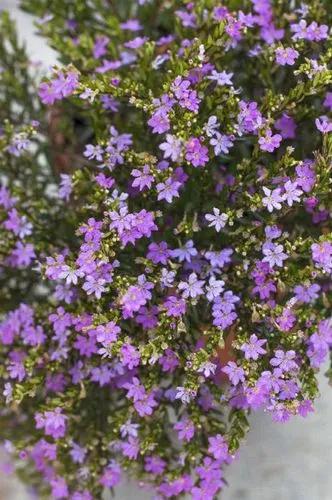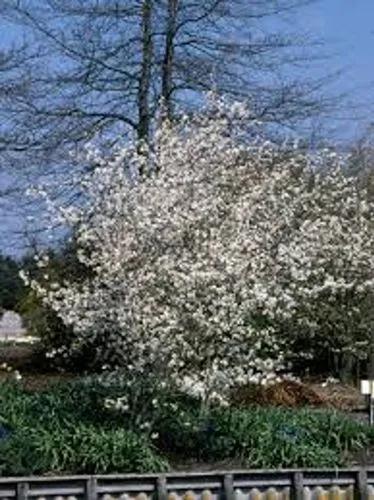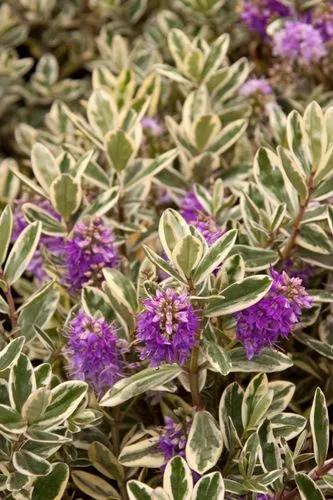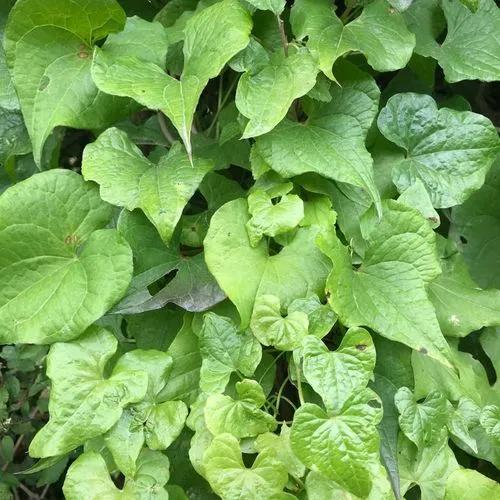It is an evergreen shrub growing to 8–9 m tall, free-standing, or clinging to the trunks of other trees as an epiphyte. The leaves are palmately compound, with 7–9 leaflets, the leaflets 9–20 cm long and 4–10 cm broad (though often smaller in cultivation) with a wedge-shaped base, entire margin, and an obtuse or acute apex, sometimes emarginate. The leaves are leathery in texture, shiny green glabrous on the upper surface and somewhat lighter and matte on the underside. Young plants have smaller leaves and fewer leaflets. Each leaflet has a central rib that divides it into two halves, with between four and six ribs clearly visible up to the third order. The stipules merge with the petiole, the length of which is 12-15 cm. The flowers are produced in a 20 cm panicle of small umbels, each umbel 7–10 mm diameter with 5–10 flowers. The flowering period extends from midsummer to early autumn. The flowers are hermaphroditic, having a colour ranging from yellow to green and a double perianth radial symmetry. They are composed of an entire annular calyx, five almost fully developed sepals, a corolla with five petals 2.5 mm long, with five stamens and five or six carpels that enclose the ovary. The style is not recognizable and the stigma is established. The fruits have an almost spherical oval drupe, with a diameter of about 5 mm. Inside the endocarp contains five seeds. These fruits ripen from late summer to early winter and are initially glandular points of a colour that ranges from orange to red-violet at maturity.
Schefflera Attenuata Care
Schefflera Attenuata
Other names: False Aralia



How to Care for the Plant

Water

Water weekly during the growing season and spray the leaves frequently. You can wait until the soil in the pot dries out and then thoroughly soak the soil when you water. Cut back on water during winter. Often, people will overwater a Schefflera plant and doing so will eventually kill it. Yellow and dropped leaves is a sign that you might be watering too much.

Pruning

Your Schefflera may need to be pruned occasionally, especially if it is not getting quite enough light. Cut off what you feel is overgrown or appearing leggy. Schefflera houseplants rebound quickly from pruning and will reward your efforts. The result will eventually be a fuller and lusher plant.

Fertilizer

Feed Schefflera plants twice a week during the growing season with liquid fertilizer, or use two applications of slow-release pellets. They are heavy feeders and will benefit from the extra nutrients.

Sunlight

Schefflera prefers bright, indirect light. In the summer, move potted plants outside where they will receive bright light but not direct sun, such as under a patio cover. A Schefflera plant that gets leggy or floppy might not be receiving enough light. Never place a Schefflera houseplant in direct, full sun because intense sun can burn the leaves.

Soil

Plant Schefflera in a rich, loose potting media with moist compost. A well-draining sandy loam soil with a slightly acidic pH is ideal. Avoid planting in an outdoor location where the soil becomes too wet or waterlogged.

Temperature

Because it is a tropical plant, Schefflera requires fairly high humidity and tropical temperatures; it will suffer in temperatures lower than 60 degrees Fahrenheit. Do not expose these plants to drafts or dry heating vents. An underwatered or cold Schefflera will begin to drop leaves quickly, so take leaf-drop seriously and correct the issue if it occurs. If the plant loses all if its leaves, you can attempt to save the plant by moving it outdoors in the spring and watering generously.

Additional

Like some other plants in the same family, Schefflera plants contain insoluble calcium oxalate crystals in the from of raphides. While not a poison, per se, these crystals can cause severe irritation in the mouth and intestinal tract, sometimes lasting as long as two weeks. All parts of the plant should be considered toxic. Poison control agencies categorize this as a plant with minor toxicity and one that can cause dermatitis reactions. Chewing any parts of this plant will create a stinging, burning sensation, so it's fairly rare for humans to eat enough to experience serious problems. In pets, symptoms include drooling, vomiting, mouth pain, and lack of appetite. There is also the potential for long-term kidney damage.

Popularity

96 people already have this plant 6 people have added this plant to their wishlists
Discover more plants with the list below
Popular articles






